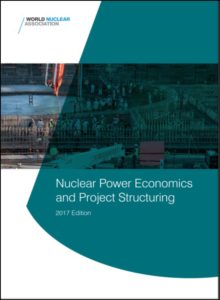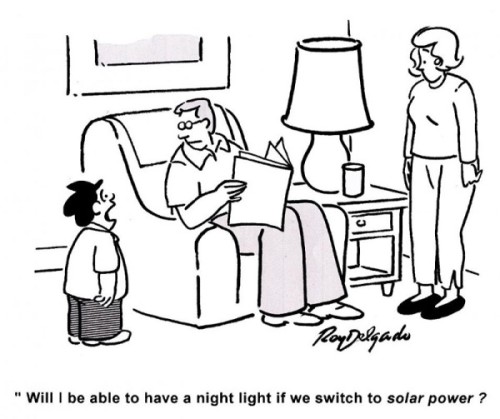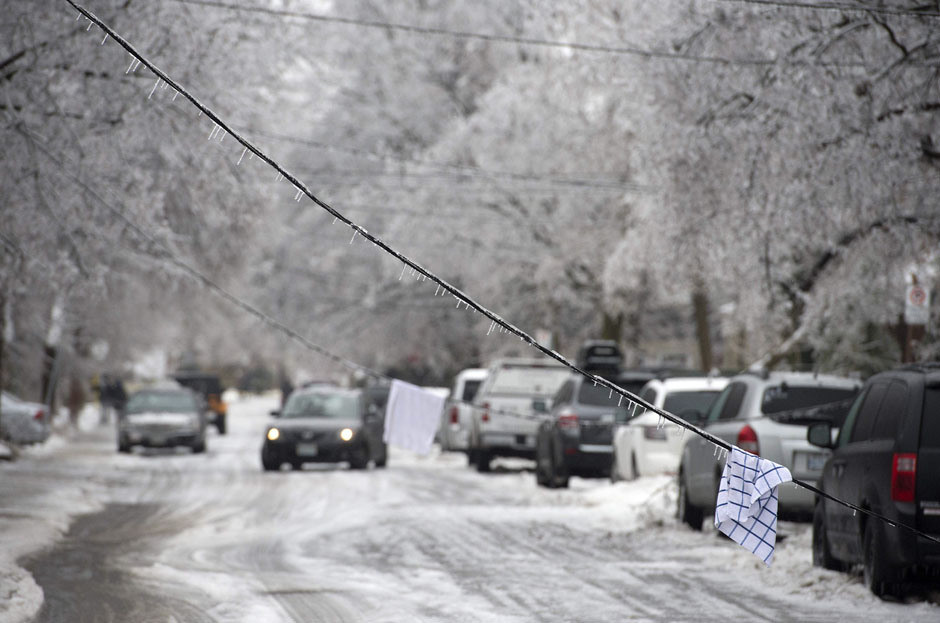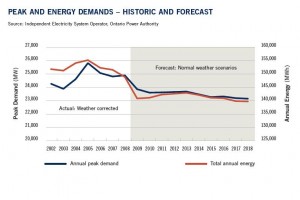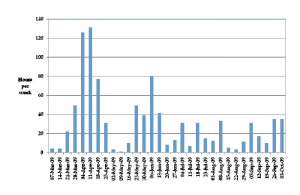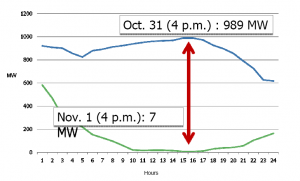As I started to read this year’s World Energy Outlook (WEO 2013) from the International Energy Agency (IEA), it was the very first line in the executive summary that caught my interest. The report starts out with “Many of the long–held tenets of the energy sector are being rewritten.”
It then goes on to explain: “Major importers are becoming exporters, while countries long-defined as major energy exporters are also becoming leading centres of global demand growth. The right combination of policies and technologies is proving that the links between economic growth, energy demand and energy-related CO2 emissions can be weakened. The rise of unconventional oil and gas and of renewables is transforming our understanding of the distribution of the world’s energy resources. Awareness of the dynamics underpinning energy markets is essential for decision makers attempting to reconcile economic, energy and environmental objectives. Those that anticipate global energy developments successfully can derive an advantage, while those that fail to do so risk making poor policy and investment decisions.”
What is clear is that energy is important! Most of all there is change in the air – ignore it at your peril. And with change comes opportunity. This is where I want to focus my discussion this month. But before I go on, I think it is useful to summarize the key points from the report to further clarify the paragraph above. The WEO 2013 is concluding the following:
- The centre of gravity of energy demand is switching decisively to the emerging economies, particularly China, India and the Middle East, which drive global energy use one-third higher.
- As the source of two-thirds of global greenhouse-gas emissions, the energy sector will be pivotal in determining whether or not climate change goals are achieved.
- Large differences in regional energy prices have started a debate about the role of energy in unleashing or frustrating economic growth.
- Energy price variations are set to affect industrial competitiveness, influencing investment decisions and company strategies.
- Countries can reduce the impact of high prices by promoting more efficient, competitive and interconnected energy markets.
- A renewed focus on energy efficiency is taking hold and is set to deliver benefits that extend well beyond improvements in competitiveness.
- Enhancing energy competitiveness does not mean diminishing efforts to tackle climate change. Renewables account for nearly half of the increase in global power generation to 2035, with variable sources – wind and solar photovoltaics – making up 45% of the expansion in renewables.
- Coal remains a cheaper option than gas for generating electricity in many regions, but policy interventions to improve efficiency, curtail local air pollution and mitigate climate change will be critical in determining its longer-term prospects.
- Market conditions vary strikingly in different regions of the world, but the flexibility and environmental benefits of natural gas compared with other fossil fuels put it in a position to prosper over the longer term.
So there you have it. The fastest growing economies have the fastest growing demand, high energy prices are slowing growth in some markets and giving an economic advantage to others with lower prices; and climate change is having an impact on energy decisions.
The above makes it sound as if the path to a low carbon future is built on more renewables and gas. But is it really? Looking at the following chart we can see that in the OECD countries where demand growth is modest and electricity supply is already robust, gas is the go-to fuel both due to cost and as a cleaner alternative to coal; and renewables are the supposed clean generation of the future. Not surprisingly in the non-OECD countries where demand is growing much more quickly (read mostly China!), they are doing everything they can to develop all kinds of supply – including more coal, more gas, more renewables and yes, more nuclear.
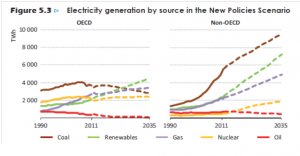
So what does this mean for nuclear power? According to the IEA, “Nuclear power generation increases by two-thirds in the New Policies Scenario, reaching 4,300 terawatt-hours (TWh) in 2035. Demand is driven heavily by expansion in just a few countries: China accounts for around half of the global increase; Korea experiences the next largest increase over the projection period (the only OECD country to see appreciable growth), followed by India and Russia. Overall, non-OECD economies see their share of global demand for nuclear power jump from less than 20% to nearly 45% in 2035. While prospects for nuclear power at the global level are now less uncertain than they were two years ago, there are still key issues that remain unclear. These include the possibility of further changes in government policy, implications of the ongoing safety upgrades for plant economics and public confidence, and the impact of increased competition from shale gas.”
It should not be a surprise that those countries with the largest demand growth see a large benefit from increasing the use of nuclear power. They need clean reliable baseload and nuclear meets this need. In the more advanced OECD countries, many of these already have significant nuclear fleets (80% of current nuclear capacity is in OECD countries), have lower baseload growth and can (or at least they think they can) look at other alternatives. Gas is replacing coal as a cleaner fossil option so long as it remains competitive and the challenges of new nuclear coupled with low demand growth put it more on the back burner.
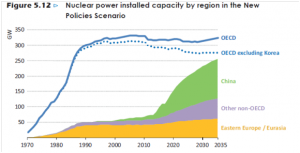
But is this the right path? As I said last year when I reported on the WEO 2012, it is important to remember the WEO is not a forecast per se; rather it is a projection of how existing and potential government policies would look once implemented. And what we still see one year later is a world investing heavily in fossil fuels to protect the status quo while also investing in renewables as a token path to the future. Of more importance, the WEO shows a path to meet climate change goals that is based on efficiency to lower demand, movement from coal to gas and CCS technology to clean up some of the coal and then more renewables.
What goes unsaid is how this is fantasy. Not that the world will continue down the path of burning fossil fuels for our electricity, but rather that we can do so and meet climate goals. The 2013 WEO New Policy scenario “leaves the world on a trajectory consistent with a long term average temperature increase of 3.6C, far above the internationally agreed 2C target”. In their 450 scenario where the target is 2 degrees, there is more renewables, more conservation, more technology to clean fossil fuels and yes, a little more nuclear.
Given the need to decarbonize the electricity sector and the limits to using wind and solar (about half the renewable additions), it should be obvious that nuclear be a stronger option. Yes, currently in North America low gas prices are challenging its competitiveness while in Europe, green ideology has a larger impact. There is a onetime carbon improvement as coal is replaced by gas; but then gas becomes the largest carbon producer on the system – so where do we go from there? And renewables will remain intermittent and likely costly for some time to come. Nuclear power is clean, reliable and in most cases, economic; but of most importance – abundant. Yes, in a resource constrained world, the amount of electricity we can potentially generate with nuclear power is almost limitless. So why don’t we see more of it in the developed world?
The answer is that we still don’t have the political will. And that comes from lack of public support. Just this week the World Bank reiterated its policy that they don’t support nuclear power – even though they support all other forms of electricity generation. Continued negative press about the status of Fukushima keep the public on edge. For example this past month TEPCO started to remove the used fuel from the Unit 4 spent fuel bay. This should have been a good news story yet most stories made it seem like a horrifically dangerous undertaking (and of course it is not).
The WEO makes the case that government support is what drives nuclear. “The rate of expansion of nuclear power continues to be mainly policy driven. It expands in markets where there is a supportive policy framework, which in some cases actively targets a larger role for nuclear in the mix in order to achieve energy security aims. But policy frameworks can also hinder or eliminate nuclear power, often as a result of public opposition: even where there is no explicit ban, long permitting processes, such as in the United States, can significantly hinder development by increasing uncertainty about project completion and increasing costs.”
I was listening to a radio interview this past week with climate change scientist Richard Peltier. [Interview starts at about 31:40 in the link]. He makes a strong case for getting the message out about scientific consensus. While he notes that between 95 and 98% of scientists agree on the science of climate change, the press reports make it seem there is much more disagreement than there really is with the result that the public is confused. The answer is to get out and speak at the grass roots level. Governments will not strongly support policies that battle climate change until the public believes it is necessary. The same is true for nuclear power. Governments will not strongly support increasing its use until the public are in agreement that it is safe and necessary.
We are seeing some progress. In Pandora’s Promise, five environmentalists are now convinced of the advantages of nuclear power and they are actively advocating its use. This past month four other environmentalists have released an open letter calling on world leaders to support development of safer nuclear power systems. In their letter they state, “As climate and energy scientists concerned with global climate change, we are writing to urge you to advocate the development and deployment of safer nuclear energy systems. We appreciate your organization’s concern about global warming, and your advocacy of renewable energy. But continued opposition to nuclear power threatens humanity’s ability to avoid dangerous climate change.”
Some governments are also taking on the challenge. In the UK there is pretty much political unanimity that new nuclear is required to meet their climate goals. The result is strong political support for nuclear new build. A recent quote by Hergen Haye, Head of New Nuclear & Strategy, Department of Energy and Climate Change (DECC), UK government “To replace Hinkley alone, we have to build 6000 wind turbines. Nuclear will help us to cut costs and to face the other environmental challenges. We cannot do without nuclear because renewables will not do things alone without making electricity bills rise.” (21 November 2013 in Brussels).
In France, after pandering to the greens and committing to close Fessenheim, the French government is finally saying that there will not be more closures. We see strong political support where nuclear is needed most in China, Russia and India although Korea is wrestling with their future plan due to recent scandals.
I come back to the first line of the WEO 2013, “Many of the long–held tenets of the energy sector are being rewritten.” This is a time of great opportunity. So let’s make sure nuclear power is playing its increasingly important role by providing clean reliable generation to support economic growth and a brighter more secure future for us all.
